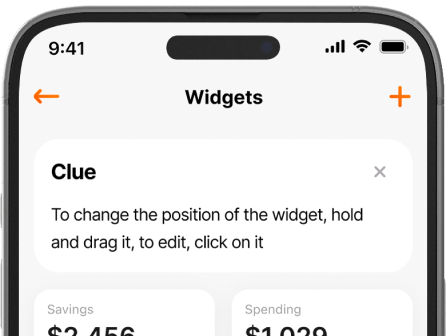Humans are biased towards the present. That’s just how we operate—things in the future just don’t seem as urgent, and the further away they are the less value we place on them, whether it’s eating two marshmallows in fifteen minutes versus one now or saving now to enjoy retirement later. That’s why having concrete goals and savings strategies is so important. The closer and more real something seems, the easier it is for you to save for it consistently. With that in mind, let’s take a look at how to set financial goals for yourself.
Short, medium, and long-term financial goals

Categorizing your goals by time horizon is a vital first step, as planning for a goal that’s a few months away is very different from saving for thirty years in the future.
Short-term goals: 0-1 years
Short-term goals are generally small and imminent. For example:
- Making a budget
- Saving for a vacation
- Paying off some credit card debt
- Building an emergency fund
- A specific purchase
- Paying rent
Anything that you can realistically accomplish in under a year is a short-term goal, though that’s not a hard-and-fast rule. You may have goals you consider short-term that take up to two years or more to reach. In general, though, you should try to make your short-term goals easy to hit, keeping you motivated to continue saving.
There are a few key things to do when making short-term financial goals:
- Make a budget and make sure you’re realistically able to meet your goal within the time frame you want. Look for areas where you can cut expenses if you need to.
- Put your savings into a separate account (preferably a savings account) so you can easily track your progress.
- Set up regular automatic transfers from your bank account so you don’t have to stay on top of it manually.
Medium-term goals: 1-5 years
Medium-term financial goals require a longer time commitment and may involve significant life changes. For example:
- Buying a car
- Saving a down payment for a home
- Changing careers
- Paying off debt
- Saving for education
There’s a big difference between one-year goals and five-year goals, though, and that should be something you consider when choosing where to keep your money and how to measure your progress. You should do everything you do for short-term financial goals, like budgeting and automatic transfers, but also:
- Consider keeping your money in less-liquid accounts and/or investments where you may be able to get better returns.
- Periodically reexamine your goals to make sure they’re still important to you and that they haven’t changed significantly in cost or availability.
Long-term goals: 5+ years
Long-term goals can be anywhere from five to 50+ years away, so they’re harder to comprehensively plan out. They can also be quite profitable, though, as your money can accumulate significant returns over time if you manage it correctly. Common long-term goals include:
- Retirement
- Children’s education
- Pay off a mortgage
- Starting a business
Retirement is the most common of these and is a whole topic unto itself. The same general approach can be applied to most long-term goals, though:
- Keep your money in accounts that generate high returns, especially investment accounts like IRAs or Education Savings Accounts (ESAs).
- Rebalance your investments periodically to make sure you’re exposed to progressively less risk as you approach your goal.
- Automate your savings as much as possible to keep yourself on track.
- Set milestones and keep track of your progress. The earlier you can catch a shortfall, the easier it will be to make up.
- Don’t ignore small short-term savings; they can add up.
Set SMART goals

It’s a classic but invaluable piece of financial advice: keep your goals SMART:
- Specific
- Measurable
- Achievable
- Relevant
- Time-bound
Specific
In this case, “specific” means “as detailed as possible.” The goal should be a well-defined target with a clear path to it, not a general objective. That includes what you want, when you want it, how you’ll get it, and any other important details.
- Not specific: I want to have a financial safety net.
- Specific: I want to build an emergency fund containing at least three months’ salary so my family can avoid debt and weather crises. I can do this in about 18 months if I save 15% of my salary, which I can do by setting up an automatic transfer from my checking account a few days after I get paid every month.
If you’re finding it hard to be specific, your goal may be too broad. In that case, consider breaking it down into multiple goals with easily identifiable conditions for success. The goal of “financial stability,” for example could be separated into several separate objectives: being debt-free, having a steady income, building an emergency fund, and being able to afford certain discretionary expenses.
Measurable
If you’ve fleshed out the specifics of your goal, you’ve probably already found ways to measure it. The key here is to look for well-defined checkpoints—usually, an amount of money saved—that can help you gauge your progress, adjust your behavior if needed, and give you a little psychological bump.
- Not measurable: I want to save more.
- Measurable: I want to save $250 more every month, so every month I will increase my savings by $50.
You can’t measure what you can’t see, so being able to accurately track your spending and saving is very important here. Putting your savings into a dedicated account that you can monitor helps a lot, as does having an accurate budgeting system.
Achievable
Alpha Centauri is approximately 4.37 light-years from the Sun, but traveling there would take about 100 years (depending on speed). That’s a measurable goal, but not currently an achievable one. Reaching for the stars is great, but setting financial goals that you’ll inevitably fail to reach will get in the way of real progress. There’s a reason humans went to the moon first, after all.
- Not achievable: I have $30,000 saved and expect to make an average of $45,000 a year for the foreseeable future. I want to purchase an $800,000 home in a few years.
- Achievable: I have $30,000 saved and expect to make an average of $45,000 a year for the foreseeable future. I want to purchase a $180,000 home in four years.
Figuring out if your goal is realistic or not requires you to have a solid understanding of your financial situation and cash flow. What’s the maximum you can reasonably save in a month? How long would it take to reach your goal at that rate? That figure should give you some perspective on the goal’s achievability.
Realistic
Sending a human to the moon is currently achievable (i.e., not impossible), but unless you can demonstrate that it would be beneficial to send you, it’s not realistic to expect that you’d be able to get the scientific and financial support to go.
That’s the difference between “achievable” and “realistic” in this framework: something has to be possible, desirable, and likely to happen based on the resources you have available. This means not relying on significant external support, good luck, or ideal circumstances. Your goal is only realistic if it can be achieved without making any unwarranted assumptions.
- Not realistic: If I stop eating out and get a job paying 40% more, I’ll be able to pay off my credit card debt in a few months.
- Realistic: If I make some spending cuts and start doing some work on the side, I’ll be able to pay off my credit card debt in a year.
“Relevant” is often substituted for “realistic” here, and it’s related: unless your goal actually matters to you and anyone else involved, it’s unlikely that you’ll have much incentive to achieve it.
Time-bound
It should be obvious by now, but for the sake of completing the acronym, it’s important to emphasize that your goals should have a specific timeframe. If your goal is specific, measurable, attainable, and realistic, you probably already know around when it should be completed.
The key with a time-bound goal, though, is thinking of that timeline as a deadline and sticking to it. Flexibility is fine if circumstances change, but try not to push back your goals every time you need some extra money. Look for expenses you can cut instead of reducing your savings.
- Not time-bound: I’ll save until I have a $5,000 emergency fund.
- Time-bound: I’ll save $250 a month and build a $5,000 emergency fund in 20 months.
Examples of financial goals

Exactly what your financial goals will look like is up to you, but there are a few common ones that you may want to consider:
- Create an emergency fund. Putting away three to six months of living expenses in a savings account can help you stay out of debt if you run into unexpected expenses or lose your job. Try to start with at least a few hundred dollars and consider prioritizing this fund over other savings until you meet your goal.
- Pay off debt. If you have credit card debt or other high-interest liabilities, your potential savings are going towards interest payments. These should be paid off as quickly as possible. Larger and lower-interest debts, like student loans or mortgages, are typically medium/long-term goals.
- Build retirement savings. If you want to have enough money to retire, you’ll need some long-term savings. Starting early (or whenever you can!) and contributing steadily is advisable. Take advantage of the retirement accounts available to you and try to put away at least 15% of your income per year.
Committing to your financial goals
If you’ve ever tried to form an exercise routine, change your eating habits, or learn a new skill, you know that the hardest part is commitment. You can make a plan, follow it passionately for a week, and then find yourself falling back into the same old patterns later. The point of setting these goals is to help you break out of that cycle.
Organizational psychologist Edwin Locke has repeatedly shown in studies that specific, ambitious goals increase performance for both groups and individuals. His conclusions are supported by a large body of related psychological research that tends to show that setting high goals, regardless of starting point or ability, has a direct effect on success.
Successful runners don’t just say, “I’m going to run.” They set SMART goals, like “I’m going to run a 65-minute 10k three months from now. I’ll start running four kilometers five days a week and increase my distance by one kilometer every two weeks.” They then track their progress, adjust their training methods, and set themselves up to create good habits.
Creating SMART goals and building good financial habits and automating as much as possible will make your progress a lot smoother. Spend some time implementing good tracking systems, automatic money transfers, and commitment devices. Involve others in your goal, set up rewards for hitting certain milestones, and make a habit of checking up on your finances and identifying inefficiencies. Putting in some effort upfront will pay off later.








